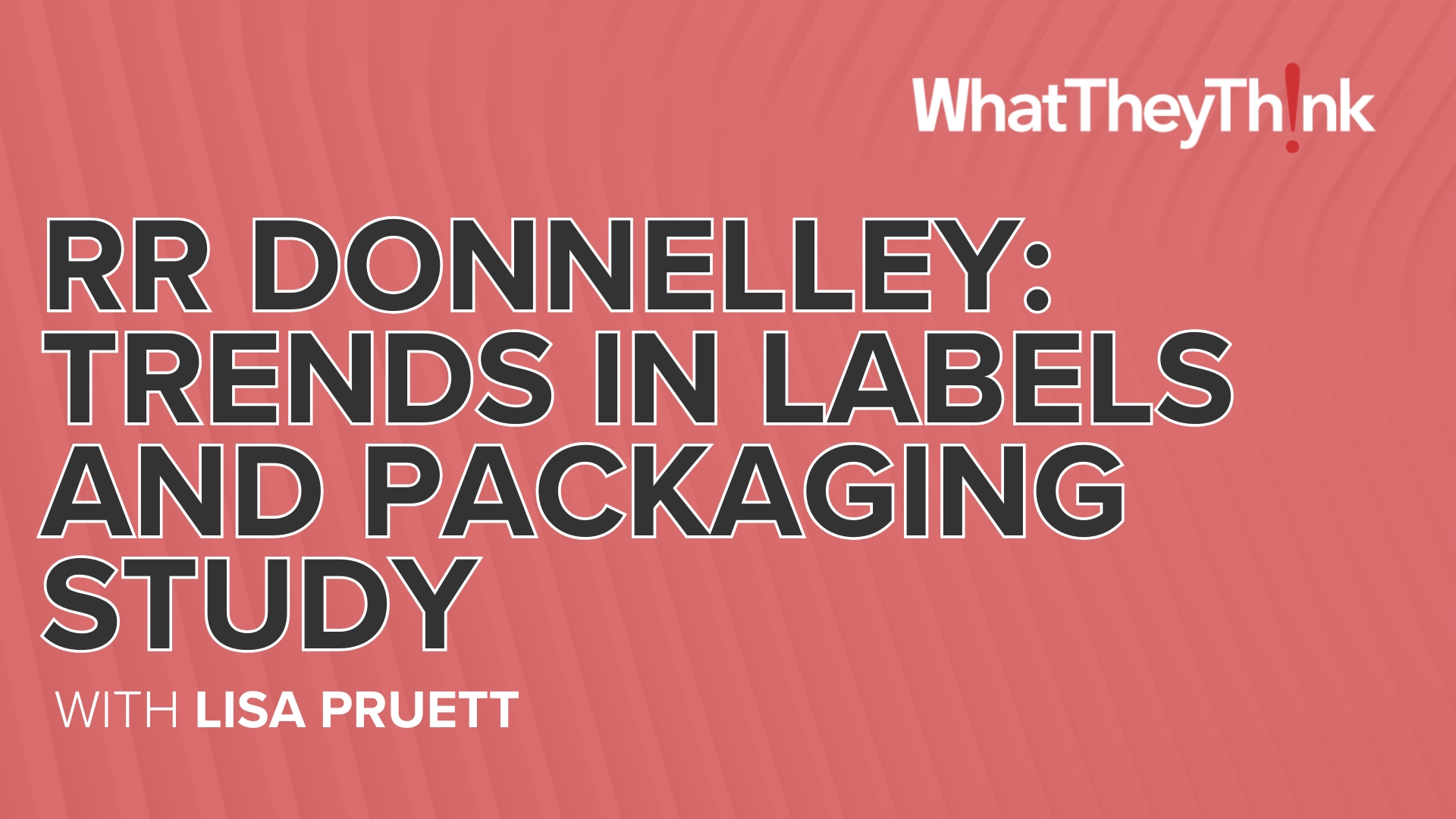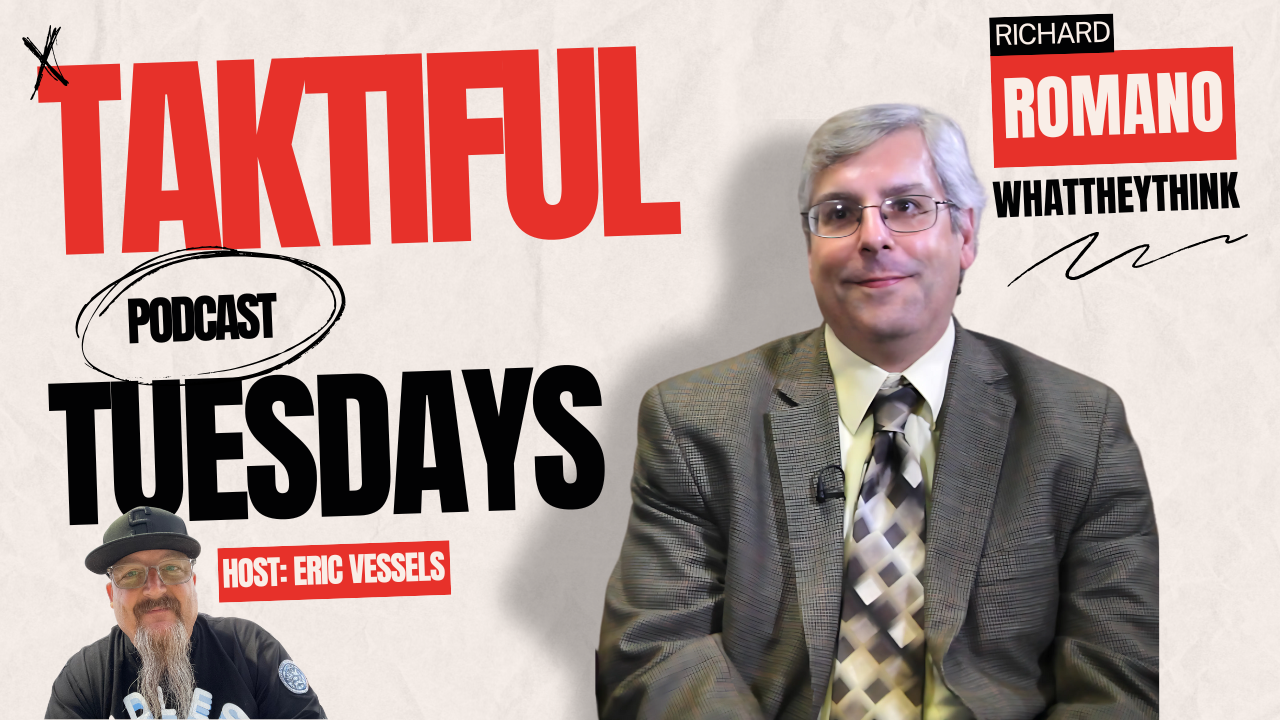Robert Seay, Business Development Director – Packaging, Graphics Solutions Business, HP
Predicting the Future
Those who have been around the packaging industry can tell you that no one can predict its future. From experiments gone awry – like Jacques E. Brandenberger’s failed attempts at transparent tablecloths that ultimately resulted in the invention of cellophane in 1908, to petroleum-based materials used to protect ammunition during World War II(1) – the drivers of innovation are constantly changing. When self-service retail and new food products, particularly frozen food, became available in the 1950s, Europe took a lead role introducing new packaging and distribution that became important in providing mass-produced food at reasonable prices.(2) Then the popularity of bottled water in the 1990’s resulted in packaging innovation for ultra-lightweight, collapsible plastic bottles.
Moving into the 21st century, counterfeiting and security concerns, particularly in Asia, have led to tamper-proof, authentication, track and trace, and anti-theft packaging innovations. Likewise, the demand for sustainability and environmentally friendly packaging in North American markets has resulted in some companies transitioning from petroleum-based plastic containers to containers made from corn and biodegradable PLA drinking cups(3). Others are using renewable, compostable pouches made of a bio-polymer derived from plant and corn starches, while using the latest eco-friendly water-based printing inks, which contain less than five percent of volatile organic compounds.(4)
From accidents in the laboratory to security demands by brand owners to environmentally conscious consumers – different factors drive packaging innovation at any given time. While the argument that a box is “just a box” remains true, the way the box will look and how it will be produced has evolved and will continue to evolve going forward.
To map out a growth strategy, packaging converters must understand and use the knowledge of what drives innovation today. Many converters are building growth strategies around digital print technologies, and some early adopters have already integrated digital presses into their current operations.
Will this be a revolution of replacing current flexo equipment with digital? Or will it be more of an evolution of new products and technologies integrated with more traditional means of production? No one knows for sure, but studying trends in similar industries can provide perspective. Further, certain conditions in packaging today may accelerate the integration of digital package printing equipment into existing shops sooner than expected.
To develop an effective growth plan, converters need a clear picture of future packaging requirements, an understanding of brand owners’ expectations and knowledge regarding the latest capabilities of digital print and other innovative technologies.
Learning from the Past
Let’s start by looking at general commercial printing to learn from the economic and technological changes that took place when digital equipment was first introduced and eventually became a mainstream technology.
Commercial printers who understood the trends and spotted the growth opportunities were early investors in digital presses. They reaped the benefits by being able to deliver on more profitable, short-run jobs with fast turnaround times. While conventional print volumes declined, digital print volumes actually increased.(5)
Commercial printers were enticed by many of the same benefits that packaging converters find attractive about digital printing: No plates, minimal setup time, fast turnaround, the ability to easily incorporate variable data and the advantages of advanced color matching.
Flexibility was a key to digital success in general commercial printing. The same is true for packaging, particularly in terms of substrates. This can be seen clearly in the top three segments – flexible packaging, boards and rigid plastics – all of which vary greatly in thickness and printing methodology. As digital print technology has progressed, solutions are now available across a broad number of substrates including films, plastics, folding cartons and corrugated. Printing on substrates with varied thicknesses can be handled better by digital technology than traditional flexo solutions.
One of the early challenges for commercial printers adopting digital technology was compatible workflow and finishing solutions. Today, most leading workflow and finishing vendors have solutions for both offset and digital production.
Understanding the Contrasts
At first, commercial printers struggled with digital technology as it matured into a robust and reliable method of production. Now packaging converters are actually benefitting from the commercial early adopters. As digital print technology penetrates the packaging industry, it is a much more robust and stable technology with a large array of leading workflow and finishing partners. Other differences also point toward accelerated integration of digital print technology in the packaging industry:
- Technology – Packaging converters are getting a mature, dependable technology compared to their commercial counterparts a decade ago.
- Design – Brands are driving complex, cost-effective designs that may require digital technology to produce. This is quite different from commercial printers who needed to train their sales team and then sell their customers on the advantages of digital printing.
- Job mix – Converters have few surprises when it comes to job types compared to commercial printers who can encounter many different job types in the course of a day.
- Run length – Long-run lengths continue to make up the majority of packaging jobs, but the growth opportunities going forward point to shorter run lengths and package lifecycles.
- Existing equipment – Flexo equipment offers a good quality and cost-effective solution for long runs that will have a role in packaging converting for the foreseeable future. For many commercial printers, offset printing requires large volumes and has low margins, making it increasingly difficult to commercially justify some offset operations.
Packaging converters will benefit from the learning of their commercial counterparts, which will help better define what should move to digital. This will accelerate the growth of digital packaging printing.
Seeing the Opportunity
Unlike commercial printers who have all types of customers, packaging converters are generally driven by brands. In the 21st century, innovation is being driven by brands and to some extent by consumers who directly interact with brands to influence their decisions.
In general, brands today demand:
- Global solutions – International marketing campaigns require an international network of converters that provide consistent quality and color matching at any quantity.
- SKU proliferation – There are more versions than ever for each product. Multiply that by different languages and regional requirements and it becomes quite challenging. Packaging converters deal with more and more short runs, and they need to use their existing high-speed solutions for long jobs only.
- Reduced costs – Economic pressure has resulted in efforts to reduce costs across the supply chain. Shorter runs, just in time delivery, minimal inventory and geographical proximity to production sites are all key factors.
- Mass customization and versioning – Event-driven marketing has resulted in many customized runs that demand fast turnaround times. Additionally, the retail channel often requires versioning to ensure differentiation from chain to chain.
The trend is to connect with consumers using shorter, time-specific targeted runs on a broad range of substrates, while maintaining the same high quality standards and exact color matching for the brand’s standard, long-run packaged products.
Understanding the advantages of digital adoption for package converters today, as compared to commercial printers yesterday, as well as the evolving demands of brand customers -- it seems clear that digital printing represents a growth opportunity for packaging converters.
Defining your Growth Strategy
By understanding current trends in the packaging industry and learning from the experiences of commercial printers, converters can better prepare for the future. If they have not done so already, converters should consider integrating digital print technologies into their shop. This is principally driven by digital’s ability to respond to these trends:
- Economic pressure to reduce supply chain costs
- Just in time supply and reduction of inventory
- Testing of innovative marketing concepts
- Varied use of substrates from plastics to boards
- Multiple versions resulting in many short runs
- Special versions for holidays and events
- Color matching and consistency
Packaging converters need to identify growth areas and come up with a strategic plan. Today’s packaging requirements are being driven by brands to be more customized than ever before. Growth opportunities lie in the demand for more versions and even personalized packaging, which can only be supplied using digital technology.
References:
- Innovative Food Packaging Solutions, Journal of Food Science. October 2008 (http://www.ift.org/Knowledge-Center/Read-IFT-Publications/Science-Reports/Scientific-Status-Summaries/Innovative-Food-Packaging-Solutions.aspx)
- Driving forces for food packaging development in Sweden - a historical perspective, World of Food Science, 2005, (http://www.worldfoodscience.org/pdf/SwedenPackaging.pdf)
- Innovative, Ecological Flexible Packaging, Innovia Films, 2007 (http://www.dairyfoods.com/ext/resources/White_Papers/SPF07-Innovia-Films-White-Paper.pdf)
- The future of flexible packaging, Packaging-Gateway.com, Jun 2012, (http://www.packaging-gateway.com/features/featurefuture-flexible-packaging-innovation)
- The Association for Suppliers of Printing, Publishing and Converting Technologies, NPES News, Sep 2010 (http://www.npes.org/pdf/NPESnewssept10.pdf)















Discussion
By Andrew Copley on Dec 19, 2013
Great points, Robert. There are millions of customization opportunities that brand owners can take advantage of as the economics of packaging shift from mass production to mass customization. Building on the predictions that you included for the future, we’re excited about a few others: think about what could be done with packaging for regional and seasonal preferences—like handmade pastas sold at regional markets or special tea blends for Fall in the Northeast. Or language versioning on packaging with Spanish in states like California or French in Maine. Digital packaging can also add on advanced anti-counterfeiting measures that help tracking and tracing that were previously not possible on offset packaging. We’re seeing big changes ahead for 2014 and now is the time to get acquainted with what digital printing can offer. – Andrew Copley, Senior Vice President/General Manager, Graphics Communications Business Group, Xerox
By Greg Imhoff on Jan 23, 2014
Well written Robert and I echo Andrews good comments.
I would like to add in two additional drivers which may be addressed above specifically as:
(1) sustainability and
(2) end user desire for self contained packaging.
Fwimbw,
Greg Imhoff